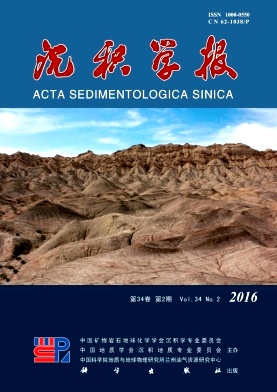Study on the Imbrication of Sand-scale Particles in Modern Point Bar in Dunhuang City, Gansu
doi: 10.14027/j.cnki.cjxb.2016.02.001
- Received Date: 2015-05-04
- Rev Recd Date: 2015-06-27
- Publish Date: 2016-04-10
-
Key words:
- sand /
- imbricate structure /
- dip angle /
- trend /
- water flow direction /
- reservoir anisotropy
Abstract: Imbricate structure is a common sedimentary structure. Yet, so far, the research on imbricate structure is mainly confined in gravel, and no systematic study of sand grains is conducted. Actually, just like conglomerate, sand grains also develop imbricate structure, and are very perfect. Meanwhile, their imbricate structure contains much more geologic information than that of gravels. Therefore, the study of sand grains' imbricate structure is much more significant.
In this study, we preceded detailed work at Dang River and Aksai River of Dunhuang, Gansu in recent years and found that there also develop imbricate structure in sand grains of modern marginal bank, which is far more complicated than that in gravel. First, according to research, the dip angle of sand grains' imbricate structure varies larger than that of gravel grains', ranging from some 10° to 50°~60°. The maximum can reach 70°~80°, and the average is 45°~50°, in total, which is obviously larger than the dip angle, 34°, of gravel' in the same channel segment. Second, compared with the gravel' trend, the sand grains' trend is not so stable, and sometimes it can appear double trend in small scope. Third, sand grains' imbricate structure can be controlled by lamina, presenting as lamellar. Fourth, according to the contact relation of sand grains, there are two types of imbricate structure, namely grain-braced imbricate structure and matrix-braced imbricate structure. Furthermore, the grain-braced imbricate structure also can be divided into two kinds:lamina-controlled imbricate structure and folium-controlled imbricate structure, both of which develop in "clean water" environment and form in pluvial stabilization period. Meanwhile, matrix-braced sand grains' imbricate structure develops in "muddy water" environment and maybe form in pluvial peak period.
The study of sand grain imbricate structure has significant meaning to sedimentary environment research, paleocurrent analysis and reservoir study. And the grain-braced sand imbricate structure can shape peculiar shield pore and become fine reservoir space, which is the root of sandstone reservoir's emerging of anisotropy.
| Citation: | NI LiangTian, ZHONG JianHua, LI Yong, HUANG LeiTong, SHAO ZhuFu, LIU ShengXin, SUN NingLiang, HAO Bing, MAO Cui, XIONG ZhiQiang, TIAN Yuan, WANG XiaoNan, LI WeiHua. Study on the Imbrication of Sand-scale Particles in Modern Point Bar in Dunhuang City, Gansu[J]. Acta Sedimentologica Sinica, 2016, 34(2): 207-221. doi: 10.14027/j.cnki.cjxb.2016.02.001 |






 DownLoad:
DownLoad: